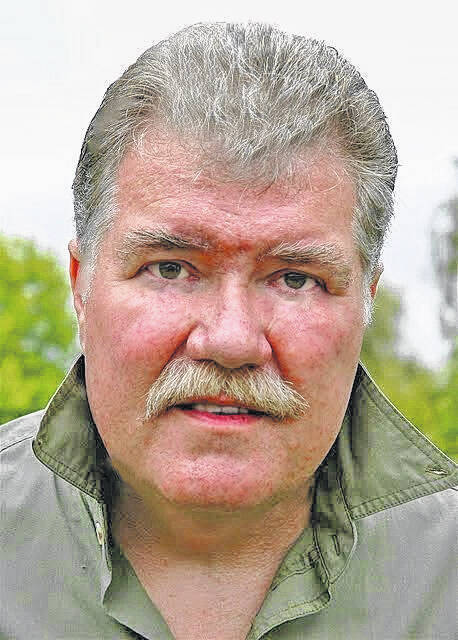

April is here! Hooray and hallelujah!
I don’t know about you, but I’m glad a new month has finally arrived. Frankly, I’d had enough of March’s shenanigans. More than my fill of cold, wet, and miserably winterlike days—even though, according to the calendar and almanac, it’s officially been spring for the last couple of weeks.
But you can’t fool me. As any experienced Buckeye well knows, early spring weather hereabouts is fickle—never to be trusted. And this year’s version has proven to be particularly untrustworthy.
We regularly got teased by blue-sky days—mild, with temperatures approaching the 70s! Twenty-four hours later we’d be struggling to ward off hypothermia and frostbite, shivering and bundled up like back in January!
Nope—I say it’s high time to get on with the seasonal show! A sentiment with which my bankside bloodroot apparently agrees.
One early-April morning, the spring after we moved into our riverside cottage, I ambled up the dead-end road and found a profusion of snowy-white bloodroot in glorious bloom along the edge of the adjacent woods. I also noticed a small number of flowering plants in the road’s narrow graveled shoulder—perilously located between the ditch and the crumbling asphalt. Plants in imminent danger of being crushed under the wheels of any passing vehicle heading to or from the turnaround.
After a moment’s pondering, I hustled back to the house, grabbed a bucket and shovel, and returned to the rescue—even though I had my doubts those delicate bloodroot would survive such an inopportune and amateurish relocating.
Wildflowers can be tricky to dig up and move, and are regularly quite demanding when it comes to their growing conditions. Some can only be shifted during a particular season. Others are too delicate and finicky to be disturbed at any time, and rarely make such uprooting—good intentions and skill notwithstanding.
I had no clue about what bloodroot preferred or required, no idea as to the best move time or procedure. But I intended to give it a shot in hopes of saving at least a few.
Thankfully, I was wrong—or lucky. Of the dozen blooming bloodroot I carried home and quickly transplanted into the rich, shaded soil on the hillside between my yard proper and the road—at least half reappeared and flowered the following spring. For the next half-dozen successive years, a similar handful continued to pop back up and bloom every April.
Even so, I wasn’t sure my efforts had truly saved them or provided an agreeable new and permanent home. Maybe I’d simply delayed their demise temporarily.
Still, every spring I watched eagerly for their reappearance. I counted their numbers. And several years after the relocating move, I rejoiced when that bloom number doubled and I tallied a full dozen showy white flowers spattering the steep bank.
That initial handful had obviously settled in and now their ranks were burgeoning!
However, the following spring, something truly amazing and unexpected happened. That full dozen reappeared…and at least ten additional dozen also joined the congregation!
White-bloomed bloodroot—well over a hundred!—came up and bloomed all over the bankside, in bunches and clumps and independent singles. Overnight, the hill became magically and breathtakingly awash with the showy white flowers—a veritable freshet of comely snow-white bloodroot. I was both stunned and delighted—though to this day, I still have no idea how or why such an exponential increase came about.
What prompted this sudden snowballing expansion?
Bloodroot are one of our earliest spring ephemerals. The stalks push up from the cold earth, bearing the flower bud which is tightly wrapped by the plant’s single leaf.
“It is singular how little warmth is necessary to encourage these flowers to put forth,” commented naturalist John Burroughs.
Indeed. While I’m currently still struggling to reassure myself that spring is on our doorstep, my bankside bloodroot have begun emerging.
Yesterday I found not a single one. But today—which has been at least as cold and cloudy, struggling to make it into the low-40s—the very tips of numerous bloodroot plants can be seen poking their caps above the duff.
I’ve been closely watching for them, of course, but I was still surprised—it seemed too cold, too soon.
Yet, deep in the fecund darkness of rich earth, those plants were somehow alerted, encouraged—stirred into action by an ancient message indicating it was time to rise. An ephemeral’s call to venture forth into April’s welcoming light.
And very soon—perhaps by the time you read these words—a breathtaking host of exquisite bloodroot will be once again spattering my hillside with their enchanting snowy blooms. A spectacular white gallery shouting the glorious news that April is here, and another Ohio spring has truly begun!
Reach Jim McGuire at: [email protected].

